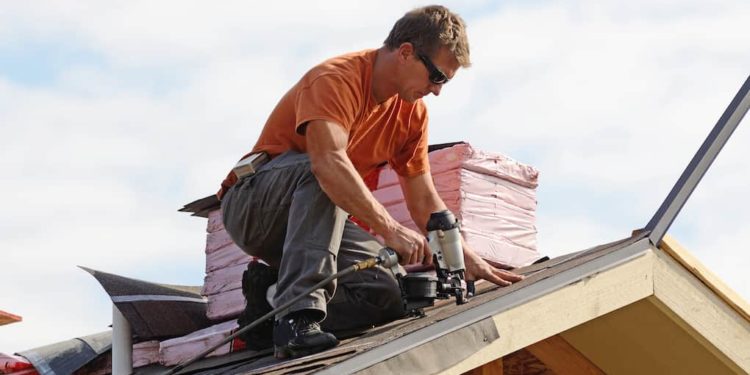A new roof is one of the most significant investments a homeowner will make—and with that investment usually comes a warranty. But here’s the catch: many homeowners don’t fully understand what that warranty actually covers until something goes wrong.
Roof warranties can provide peace of mind, but only when you know the details. Not all warranties are created equal, and knowing the difference between what’s included and what’s excluded can help you avoid future surprises.
Let’s break down the key elements of roofing warranties and what to expect from a quality roofing contractor.
Types of Roof Warranties
There are generally three categories of roof warranties, each with its own role in protecting your investment:
1. Manufacturer’s Material Warranty
This covers defects in the roofing materials themselves. If shingles fail prematurely due to a manufacturing defect—not wear and tear—this warranty applies. Lengths vary widely, from 10 years to a “lifetime” promise, depending on the product.
However, it’s important to understand that “lifetime” doesn’t always mean forever. It often means the expected life of the material under ideal conditions.
2. Workmanship Warranty
Offered by your roofing contractor, this covers issues related to how the roof was installed. If improper installation leads to leaks, shingle loss, or ventilation problems, this warranty protects you.
Workmanship warranties can range from one to 25 years, depending on the contractor. It’s one of the most important parts of your overall protection, because most early roof problems are due to installation—not material failure.
3. System Warranty
Some manufacturers offer extended warranties when their full system (underlayment, ventilation, shingles) is installed by a certified contractor. These often include both material and labor coverage, but may have strict installation and maintenance requirements.
What’s Usually Covered
Most warranties are designed to cover failures that shouldn’t happen under normal use. Here’s what’s typically included:
- Material defects: Such as premature cracking, blistering, or granule loss
- Leaks caused by faulty materials
- Labor costs for replacement (sometimes)
- Installation mistakes (when covered under workmanship warranty)
This coverage can bring real value—especially in the first few years after installation, when defects are most likely to surface. Still, the level of coverage often depends on whether the materials were installed by a certified roofing contractor.
What’s Not Covered
Here’s where many homeowners get caught off guard. Roof warranties, even the best ones, have limitations. Common exclusions include:
- Storm damage: Hail, wind, or fallen branches typically fall under homeowners insurance, not a roof warranty.
- Improper maintenance: If you never clean your gutters or let moss accumulate, you may void the warranty.
- Alterations or repairs by unlicensed contractors: DIY work or hiring non-certified individuals could invalidate the coverage.
- Natural wear and tear: Just because shingles age doesn’t mean they’ve failed prematurely.
- Improper attic ventilation: Some warranties won’t cover damage caused by trapped heat or moisture from poor airflow.
Understanding these exclusions is crucial. A warranty can provide a false sense of security if you don’t know where it stops.
Transferability: A Hidden Asset
If you’re planning to sell your home, ask whether the warranty is transferable. A transferable warranty can add value to your property and attract buyers who want to avoid the cost of roof replacement.
However, many warranties can only be transferred once, and some require the transfer to be completed within a set time frame (often 30 to 60 days after closing). Failing to follow these steps can cancel the coverage entirely.
When working with reliable roofing services, it’s worth asking about how they document warranties to make transfers easier during a sale.
Fine Print That Matters
Here are a few lines in the warranty contract that deserve your attention:
- Pro-rated vs. Non-prorated Coverage: Pro-rated warranties reduce in value over time. Non-prorated means the full replacement cost may be covered within the stated period.
- Maximum Liability Limits: Some warranties cap the amount the company will pay for a claim, regardless of damage extent.
- Claim Filing Process: Understand how long you have to file a claim after discovering an issue—and what documentation is required.
The more informed you are on the legal language, the less likely you’ll face a denial when it counts.
The Importance of Registration
After installation, many homeowners forget to register their warranty. This small but critical step ensures your coverage becomes active. Some manufacturers require online or paper registration within a short time frame—failure to do so can invalidate the entire policy.
A good roofing contractor will either register the warranty on your behalf or walk you through the process. Always confirm that your warranty is officially active and get a copy of the registration for your records.
Questions to Ask Before Signing
Before you commit to a roofing project, ask the contractor the following:
- What warranties are included with this installation?
- How long does each warranty last?
- Who is responsible for registering the warranty?
- What actions could void my coverage?
- Are there any fees associated with service calls under the warranty?
Getting answers upfront helps set expectations and ensures you’re getting what you paid for.
Final Thought: Warranties Are Only As Good As the Company Behind Them
A warranty is a promise—and the value of that promise depends on who’s making it. Even the best contract means little if the contractor disappears or the manufacturer won’t stand behind their product.
That’s why reputation, transparency, and communication matter as much as what’s on paper. When considering who to hire, look beyond just the price or materials—ask about their warranty process, track record, and responsiveness.
Companies like Strive Roofing & Construction understand that a roof is more than shingles—it’s a long-term investment. A clear, strong warranty ensures your roof doesn’t just look good today, but continues to perform for years to come.









































































